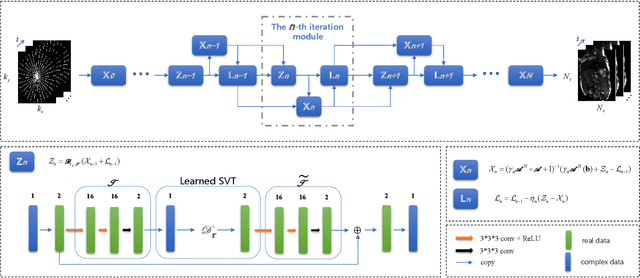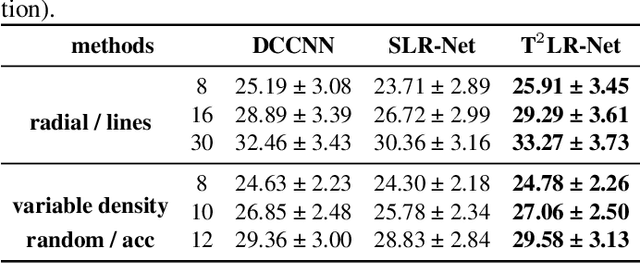T$^2$LR-Net: An Unrolling Reconstruction Network Learning Transformed Tensor Low-Rank prior for Dynamic MR Imaging
Paper and Code
Sep 08, 2022



While the methods exploiting the tensor low-rank prior are booming in high-dimensional data processing and have obtained satisfying performance, their applications in dynamic magnetic resonance (MR) image reconstruction are limited. In this paper, we concentrate on the tensor singular value decomposition (t-SVD), which is based on the Fast Fourier Transform (FFT) and only provides the definite and limited tensor low-rank prior in the FFT domain, heavily reliant upon how closely the data and the FFT domain match up. By generalizing the FFT into an arbitrary unitary transformation of the transformed t-SVD and proposing the transformed tensor nuclear norm (TTNN), we introduce a flexible model based on TTNN with the ability to exploit the tensor low-rank prior of a transformed domain in a larger transformation space and elaborately design an iterative optimization algorithm based on the alternating direction method of multipliers (ADMM), which is further unrolled into a model-based deep unrolling reconstruction network to learn the transformed tensor low-rank prior (T$^2$LR-Net). The convolutional neural network (CNN) is incorporated within the T$^2$LR-Net to learn the best-matched transform from the dynamic MR image dataset. The unrolling reconstruction network also provides a new perspective on the low-rank prior utilization by exploiting the low-rank prior in the CNN-extracted feature domain. Experimental results on two cardiac cine MR datasets demonstrate that the proposed framework can provide improved recovery results compared with the state-of-the-art optimization-based and unrolling network-based methods.
 Add to Chrome
Add to Chrome Add to Firefox
Add to Firefox Add to Edge
Add to Edge